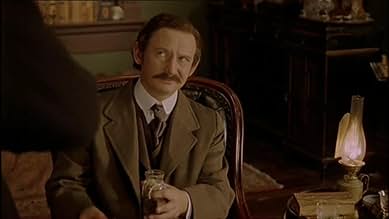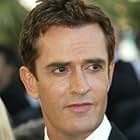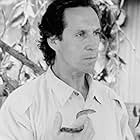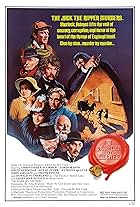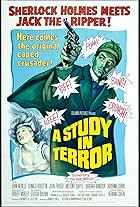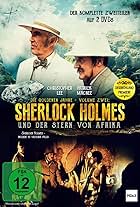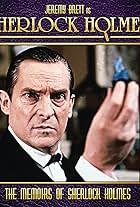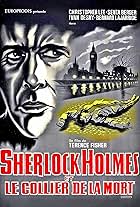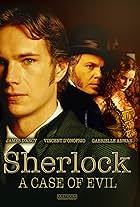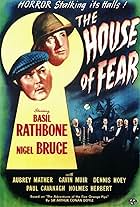IMDb RATING
6.6/10
2.8K
YOUR RATING
A serial killer stalking the teen-aged daughters of the aristocracy brings Sherlock Holmes out of his drug-filled semi-retirement.A serial killer stalking the teen-aged daughters of the aristocracy brings Sherlock Holmes out of his drug-filled semi-retirement.A serial killer stalking the teen-aged daughters of the aristocracy brings Sherlock Holmes out of his drug-filled semi-retirement.
- Awards
- 3 nominations
Tamsin Egerton
- Miranda Helhoughton
- (as Tasmin Egerton)
Andrew Wisher
- Constable
- (as Andy Wisher)
- Director
- Writers
- All cast & crew
- Production, box office & more at IMDbPro
Storyline
Did you know
- TriviaIn the film's opening scene, Holmes is seen smoking opium. It is subsequently implied that this is a regular occurrence. This represents a contrast from the character of the Conan Doyle stories, in which his drugs of choice were morphine and cocaine. In the stories, Holmes only smokes opium once as part of a disguise.
- GoofsThe police are seen using telephones in 1902, but in reality, the first phone was not installed at New Scotland Yard until 1903.
- Quotes
Sherlock Holmes: There should be no combination of events for which the wit of man cannot conceive an explanation.
Sherlock Holmes: Really, Watson, you are scintillating this morning.
- ConnectionsFeatured in Timeshift: A Study in Sherlock (2005)
- SoundtracksString Quartet No.14 in D Minor,'Death and the Maiden', the 4th Movement
Composed by Franz Schubert
Featured review
Apart from the names Sherlock Holmes and Dr Watson, there's really nothing to connect this original BBC TV movie to the original Conan Doyle stories. It's a return to the old wartime Basil Rathbone films, set in the wrong period, packed with anachronistic detail, and which fails to pay even lip service to Holmes's famous method. It's a poorly written modern police drama right down to the obligatory, clunking serial killer plot. It's just dressed in period costume. Even the plot twist about the killer's identity comes in Edwardian dress, as it could only ever possibly fresh and original in disguise pretending to be a story written a hundred years ago.
The story constantly forces modern elements incongruously into Holmes's necessarily, fundamentally low tech world. The story is set some time after the Victorian era of the classic Holmes stories, apparently to justify the use of telephones and modern police techniques like fingerprinting. Watson is about to marry an American psychiatrist, which opens the door to the modern serial killer psychodrama whose emphasis is on woolly sexual motivation and grotesque patterns of behaviour, worlds away from the traditional Holmes story where logic and deduction solve single victim locked room murders. The oddly un-Edwardian London police set up an incongruous, modern incident room to collate the information about their spiralling body count. In one scene Holmes spins around this room staring helplessly at photographs and maps, unable to connect fact and incident, which reduces the finest logical detective mind in the world to the level of "Inspector X" in any paint-by-numbers police series. Eventually Inpector Lestrade himself time-travels to the 1970s to give a suspect an Sweeney-style kicking to make him talk.
Rupert Everett as Holmes drifts through the first half of the story like someone on a mixture of recreational drugs, which is clearly the writer's deliberate intention. Trying to exploit the radical elements in Holmes's character the story inflates his drug use out of proportion. Conan Doyle saddled his creation with a habit of injecting cocaine, but there is never any suggestion that Holmes had a narcotic monkey on his back. He claims his 7 per cent solution stimulates his mind in times of boredom, a world away from the use of soporifics to deaden his brain.
Ironically it seems that in order to make these seasonal specials featuring Holmes himself the BBC abandoned its own excellent Holmes homage, the quite superb Murder Rooms, which succeeded in every respect that this film fails, injecting modern style and sensibilities while still honouring the source material. They were faithful in period detail and in many respects to the type of detective story which suits the Holmes character, and where they took a post-modern approach were able to underscore rather than undermine the quality of the original. It begs the question, as they clearly have access to writers with the talent to produce this kind of work, why didn't they use them here? Even more ironically, in the UK while this film was one of the main planks of the BBC's Christmas 2004 season evening schedule, the BBC have also been showing daytime repeats of Jeremy Brett as Sherlock Holmes. The strength of this performance, and the faithfulness to the original material, casts the poor work here into sharp relief.
The story constantly forces modern elements incongruously into Holmes's necessarily, fundamentally low tech world. The story is set some time after the Victorian era of the classic Holmes stories, apparently to justify the use of telephones and modern police techniques like fingerprinting. Watson is about to marry an American psychiatrist, which opens the door to the modern serial killer psychodrama whose emphasis is on woolly sexual motivation and grotesque patterns of behaviour, worlds away from the traditional Holmes story where logic and deduction solve single victim locked room murders. The oddly un-Edwardian London police set up an incongruous, modern incident room to collate the information about their spiralling body count. In one scene Holmes spins around this room staring helplessly at photographs and maps, unable to connect fact and incident, which reduces the finest logical detective mind in the world to the level of "Inspector X" in any paint-by-numbers police series. Eventually Inpector Lestrade himself time-travels to the 1970s to give a suspect an Sweeney-style kicking to make him talk.
Rupert Everett as Holmes drifts through the first half of the story like someone on a mixture of recreational drugs, which is clearly the writer's deliberate intention. Trying to exploit the radical elements in Holmes's character the story inflates his drug use out of proportion. Conan Doyle saddled his creation with a habit of injecting cocaine, but there is never any suggestion that Holmes had a narcotic monkey on his back. He claims his 7 per cent solution stimulates his mind in times of boredom, a world away from the use of soporifics to deaden his brain.
Ironically it seems that in order to make these seasonal specials featuring Holmes himself the BBC abandoned its own excellent Holmes homage, the quite superb Murder Rooms, which succeeded in every respect that this film fails, injecting modern style and sensibilities while still honouring the source material. They were faithful in period detail and in many respects to the type of detective story which suits the Holmes character, and where they took a post-modern approach were able to underscore rather than undermine the quality of the original. It begs the question, as they clearly have access to writers with the talent to produce this kind of work, why didn't they use them here? Even more ironically, in the UK while this film was one of the main planks of the BBC's Christmas 2004 season evening schedule, the BBC have also been showing daytime repeats of Jeremy Brett as Sherlock Holmes. The strength of this performance, and the faithfulness to the original material, casts the poor work here into sharp relief.
- steven.gough
- Jan 11, 2005
- Permalink
Details
- Release date
- Countries of origin
- Language
- Also known as
- The Return of Sherlock Holmes
- Filming locations
- Queen Alexandra's House - Hall of residence, Bremner Road, Kensington, London, England, UK(The intimate dungeon, where the crook was shot in the leg.)
- Production companies
- See more company credits at IMDbPro
Contribute to this page
Suggest an edit or add missing content

Top Gap
What was the official certification given to Sherlock Holmes and the Case of the Silk Stocking (2004) in Germany?
Answer




